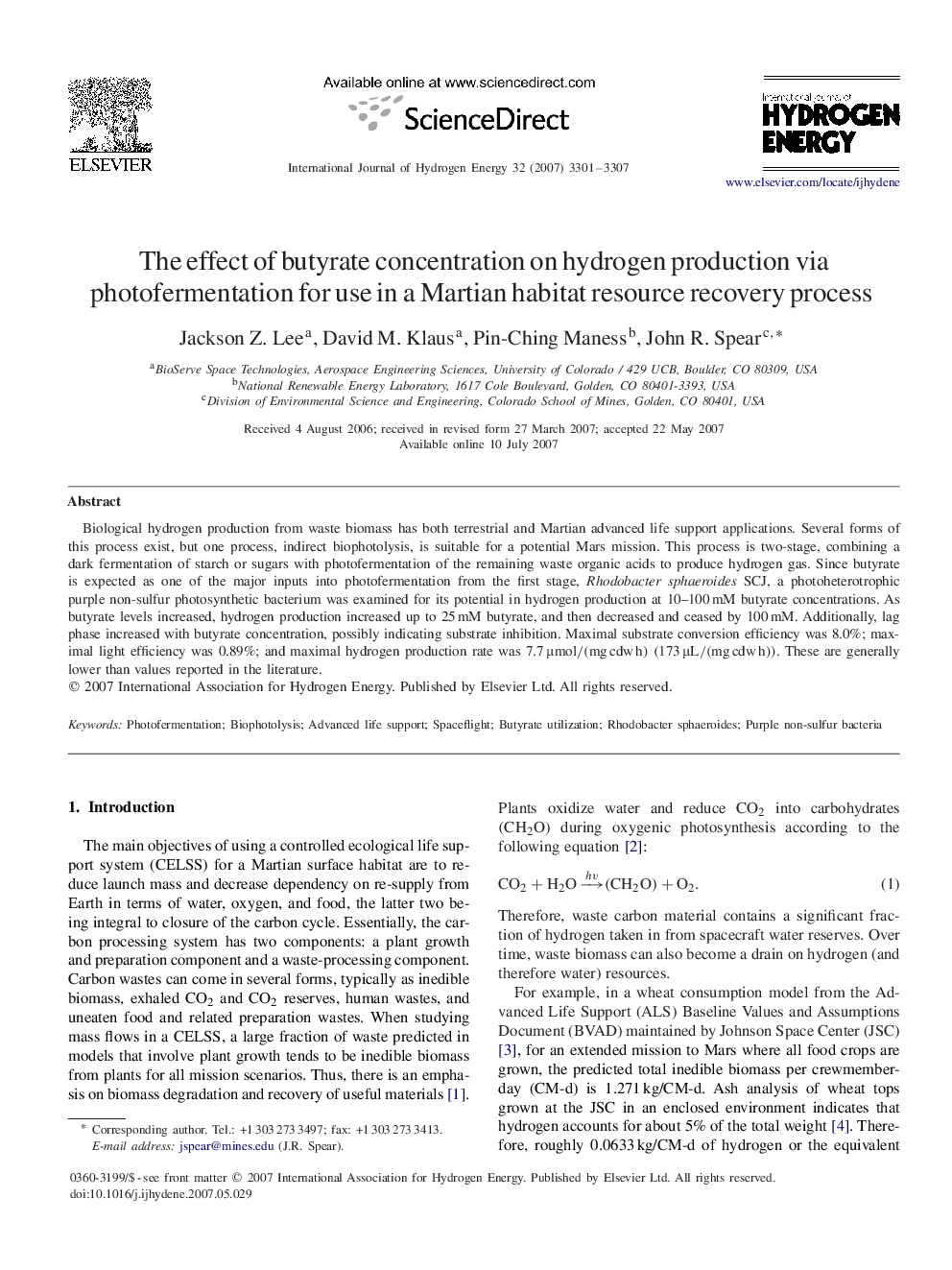| Article ID | Journal | Published Year | Pages | File Type |
|---|---|---|---|---|
| 1279670 | International Journal of Hydrogen Energy | 2007 | 7 Pages |
Biological hydrogen production from waste biomass has both terrestrial and Martian advanced life support applications. Several forms of this process exist, but one process, indirect biophotolysis, is suitable for a potential Mars mission. This process is two-stage, combining a dark fermentation of starch or sugars with photofermentation of the remaining waste organic acids to produce hydrogen gas. Since butyrate is expected as one of the major inputs into photofermentation from the first stage, Rhodobacter sphaeroides SCJ, a photoheterotrophic purple non-sulfur photosynthetic bacterium was examined for its potential in hydrogen production at 10–100 mM butyrate concentrations. As butyrate levels increased, hydrogen production increased up to 25 mM butyrate, and then decreased and ceased by 100 mM. Additionally, lag phase increased with butyrate concentration, possibly indicating substrate inhibition. Maximal substrate conversion efficiency was 8.0%; maximal light efficiency was 0.89%; and maximal hydrogen production rate was 7.7μmol/(mgcdwh)(173μL/(mgcdwh)). These are generally lower than values reported in the literature.
